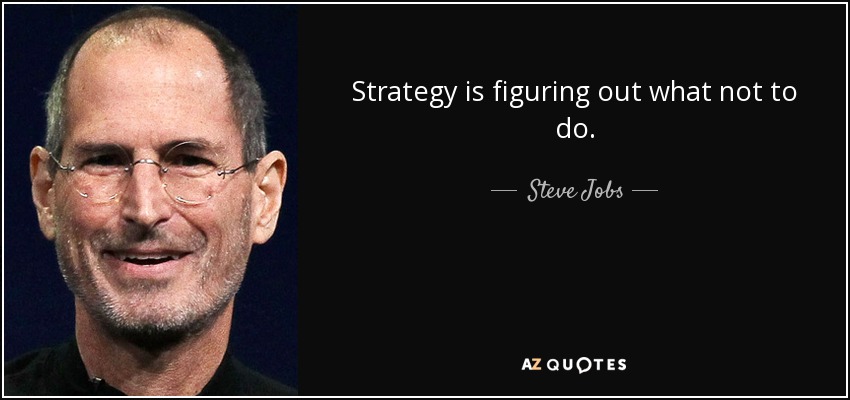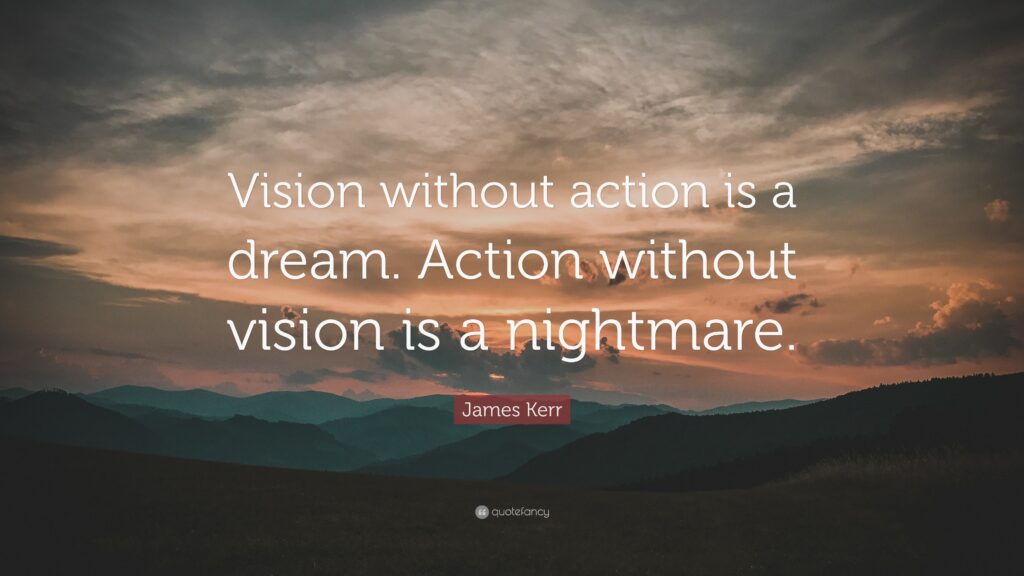Why do I need a strategy?
Startups by design are impossible feats. You don’t have (yet) a product, you don’t have customers, you don’t have a team, you don’t have money, resources… but you want to change the world. Bend the universe.
When you begin the journey, you need a thesis of what hole you are going to fill in the market. This includes a hole that does not exist yet, where you create a new market, or category.
No matter what, you still need to postulate about the way you will create value, and make it fit into the world we live in.
Said differently: find a need and fill it.
Say that your vision is a software package for retired people, which will help them manage their retirement, get life insurance, get a reverse mortgage on their homes and so on.
One of the first questions to ask is about TAM, the total addressable market. Does the market have 1M prospective customers? 100M? is the number of people in this category growing or shrinking?
That is a broad brush way to assess the size of the opportunity.
Next, you should ask yourself about the main value propositions to this market. Will you make it easier to use than the incumbents? faster? cheaper? premium? self-serve? white-glove?
Something about what you are going to offer needs to be different, and as a result be differentiated in the market. You need to say and write-down the combination of value props.
Next, comes the GTM, the go to market. Will you sell this software package directly to end users? through channel partners? sell through financial advisors? sell through retail banks? brokerages? include it in old age homes benefit packages?
Here comes the kicker. What if this is your vision:
The What: Software package for retired people
TAM: 5M people between the ages of 55-85, segment growth is 2% year over year
Value props: Easy to use UX with big sans-serif fonts, inviting buttons, calm color palette, simplified English, all your financial needs in one place.
GTM: Sell through certified financial planners, so they have an incentive to recommend the software. They have relationships with the target market.
That can be a solid presentation to any VC, that can get you enough nods to get a term-sheet, and seed money to get started.
Let’s call this your Plan A. You also pitched this to your team, the prospects and your channel distribution partners.
You start coding the product, based on Plan A. And then… you get a phone call.
Big Bank Exec: “Hello? NewCo? Yes, I heard through the grapevine that you are going to offer this great software package to the retired community. We have an initiative to serve this market, and would like to explore a long term deal, where we white-label your package under our brand. We have 1M customers who fall into this category, so it should be easy to make this profitable for both us. What say you?”
You hang up the phone, and all kinds of thoughts swirl in your mind. This sounds like jackpot! Bonanza! the mother lode!
All you need to do now is finish coding, and you are done.
Right?
Wrong.
You need a strategy exactly for situations like this, so you can tell if this is something you want to pounce on, or know for sure that it is NOT something you want to do.
You don’t have a strategy unless you know what will NOT do, however lucrative the offer sounds. It is so easy to get distracted by the new “shiny penny” opportunity.
If you raised capital based on Plan A in your pitch deck, you should not veer from it. You should only focus on that. Even if a bigger opportunity that sounds really good comes along. Having a strategy helps you know if the opportunity is for you or not.
Why should you not take this offer?
If your plan is to sell through financial planners, you are counting on them having a strong relationship with the customer. You are counting on them helping you sell your product.
If the Big Bank will only advertise your product in their branches, and does not have an intimate relationship with their clients – your strategy may fall apart. Its that simple.
Another reason is, if you coded your product to carry your brand name, and now the bank wants it white-labeled, it may add months of coding and expense to convert the software. So you may think, I will white-label it for the bank, and use my brand in the white-label when I sell to others.
Sounds easy, yes?
Once you see that your entire venture was based on providing easy UX, and a certain color scheme, you will notice that to make it white-label, all you will be asked to provide is bare bones APIs and results, so that the Big Bank will fit it into their color scheme and UX.
That for sure will not provide you and your team the ability to wow the end user with the UX you started the company for… In fact, it may HURT your brand as you are delivering parts of it, and not the total experience your investors invested in.
Another reason, is that you planned to create a generic solution, and sell it to many customers as a cloud SaaS solution.
The Big Bank? they want it on-premise and custom for them… That is not a little diversion for one client. That is a completely different venture. Think about your maintenance capabilities when you host in the cloud vs. on-prem. The costs of doing business, the team you need to send to the Big Bank when things break, the ability to deploy patches.
We can go on and on about how a proposal like this really turns your company to a different company. It makes you beholden to the Big Bank in a way that does not give you ways to shine. You are reduced to a service provider to the Big Bank, and not a service provider to your target market.
Its hard. These kind of opportunities come at you all the time. From new sales prospects and from existing customers.
Your job is to really scrutinize the entire proposal, and see that it either fits perfectly into your strategy, extends your strategy in a way that could be synergistic, or changes your strategy completely.
Because you are burning cash, and can be easily lured to take a big deal that comes your way – you must have a strategy. Through this strategy you will need to filter all activities. Its a lens that must be used when you take any new customer that is not a perfect fit to your Plan A.
As you begin your journey with your founding team, discuss these topics. Agree to the boundaries, so you all know what to expect.
When I hear founders tell me that their new product can do this, and this and this, and serve this market and that market… I get worried.
It means that they do not have a strategy. It is hard enough to be successful with one product, in one market, and one GTM.
Thus, I know you have a strategy when you tell me what you are NOT doing!
References and Quotes:




